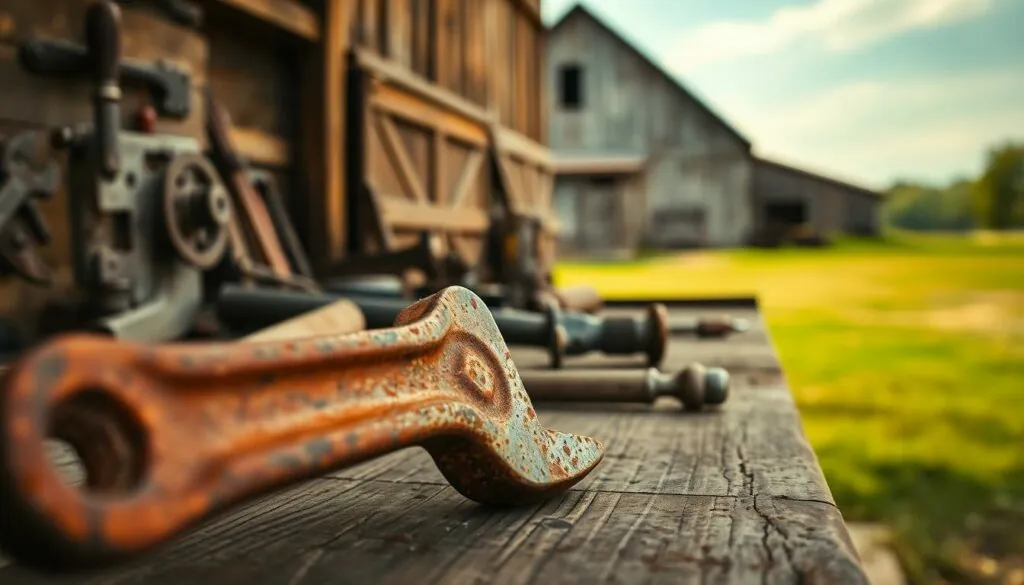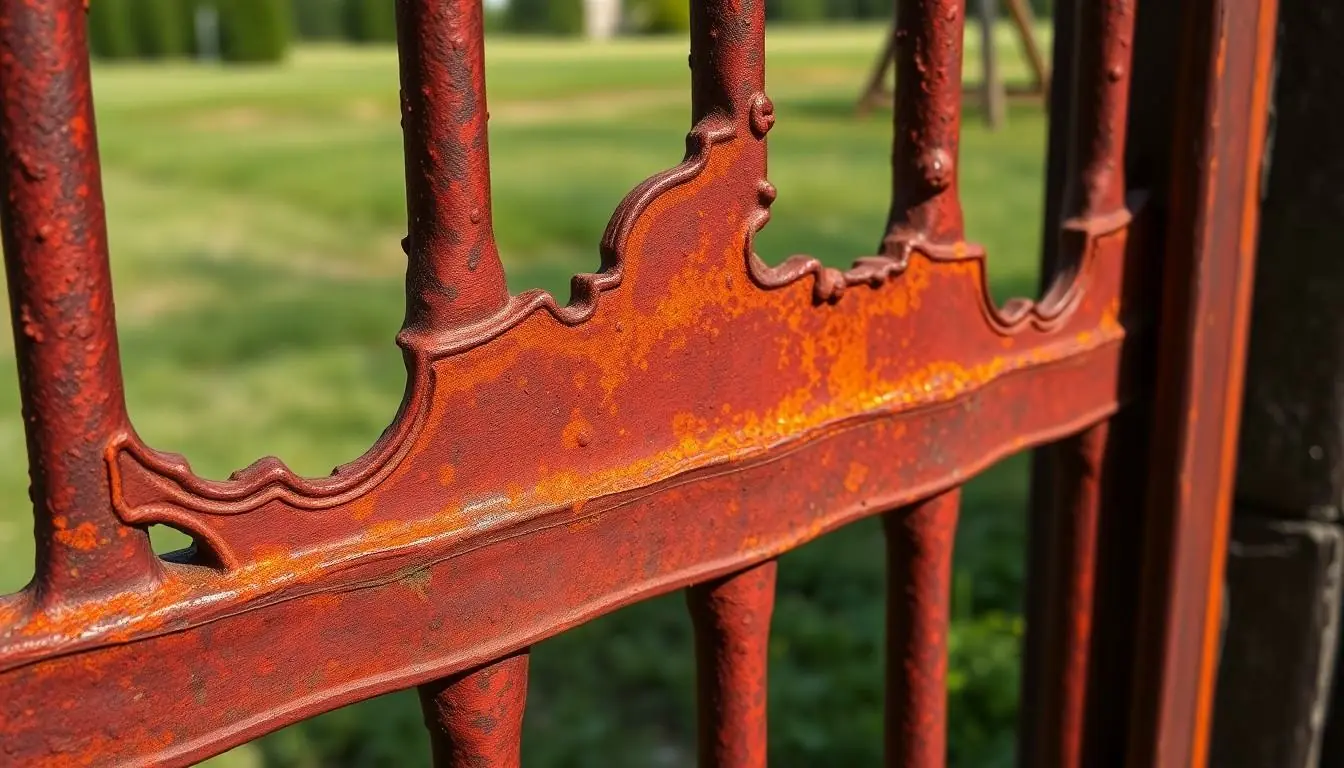Table of Contents
ToggleOld rust might seem like just a pesky annoyance, but it’s got a story to tell. Picture this: a once-glorious piece of machinery or a cherished family heirloom, now transformed into a patchy, flaky mess. But don’t let that rusty exterior fool you; beneath the surface lies a treasure trove of history and character.
Overview of Old Rust
Old rust symbolizes more than mere decay. It often conveys the passage of time and the endurance of materials. Historical artifacts, vintage vehicles, and beloved tools showcase stories etched in their corroded surfaces. Many people appreciate the aesthetic appeal of rust, viewing it as a testament to craftsmanship and quality.
Rust forms when iron or its alloys oxidize, a chemical reaction triggered by moisture and oxygen. This process contributes to the visual richness of aged items, making them unique. Collectors often seek out rusted objects for their character and authenticity. Notably, rust can increase the value of antiques or vintage machinery by highlighting their history.
Preserving items with old rust requires careful attention. Cleaning and treatment methods can maintain their appearance while protecting them from further deterioration. Some choose to leave rust untouched, allowing the artifacts to speak for themselves. Each rusted item carries its narrative, blending artistry, craftsmanship, and time.
Different techniques exist for revitalizing rusty objects, from using vinegar to applying specialized rust removers. Each method must consider the integrity of the item. Elements like age, value, and personal sentiment influence choices in restoration or preservation. Choices made regarding old rust reflect individual tastes and respect for history.
Rusty artifacts often evoke nostalgia while prompting conversations among those who encounter them. They can act as a bridge between generations, connecting past and present through shared appreciation. Understanding old rust allows for deeper engagement with the stories these objects contain.
Causes of Old Rust
Old rust forms due to a combination of factors, primarily involving environmental elements and material characteristics.
Environmental Factors
Moisture serves as a primary contributor to rust development. When humidity levels rise, water interacts with iron surfaces, initiating oxidation. Exposure to salt, common in coastal areas, accelerates this process, promoting corrosion. Acidic conditions, such as those from pollutants or certain soils, can weaken protective coatings, exposing metal underneath. Changes in temperature also play a role; fluctuating warmth can cause condensation, providing an ideal environment for rust formation. These environmental factors combine to create an environment where old rust thrives, emphasizing the need for preventive measures.
Material Types
Iron and its alloys are especially prone to rust. Cast iron, for instance, exhibits greater susceptibility due to its porous structure, which retains moisture. Steel, another common material, can rust when not adequately treated or coated. Stainless steel offers better resistance due to chromium content, though it isn’t entirely immune. Copper and aluminum, while not rusting in the traditional sense, can oxidize, forming surface patinas that resemble rust. Understanding these material types helps emphasize the importance of proper care and maintenance to prevent further deterioration.
Effects of Old Rust
Old rust affects both structural integrity and aesthetic appeal, showcasing how corrosion influences value and preservation.
Structural Integrity
Old rust significantly impacts structural integrity. Corrosion weakens metal components, potentially leading to structural failure. It compromises the strength of items like vintage vehicles and machinery. Collectors and restorers must assess the extent of rust damage before restoration efforts. Some choose to repair affected areas, while others keep the original rust to retain its character. Structural integrity plays a crucial role in the historical value of rusted artifacts. Preservation techniques can enhance stability without removing the ‘soul’ of the item. Understanding how rust affects strength allows for informed decisions in restoration and maintenance.
Aesthetic Impact
Old rust also enhances aesthetic appeal. The rich textures and colors of rust create visual interest, making objects unique and attractive. Artists and designers often incorporate rust into contemporary works, celebrating its natural beauty. In vintage items, rust tells stories of age and craftsmanship. Collectors value rusted pieces for their authenticity and historical connection. Many appreciate how rust can evoke feelings of nostalgia and evoke memories. An object’s rustic charm often increases its desirability among buyers. Embracing the aesthetic impact of old rust allows people to celebrate the beauty found in imperfections.
Prevention and Treatment of Old Rust
Maintaining items with old rust requires proactive measures. Implementing protective strategies extends the life and beauty of these artifacts.
Protective Coatings
Applying protective coatings safeguards against moisture and further oxidation. Options include rust-inhibiting primers and paints, which create a barrier that prevents rust from forming. Many manufacturers offer clear sealants, allowing the character of rust to shine through while providing protection. Original finishes often retain visibility, which preserves historical integrity and boosts aesthetic appeal. Selecting the right type of coating depends on the specific item and its environment, ensuring tailored protection against environmental factors.
Regular Maintenance
Conducting regular maintenance ensures that old rust stays in check. Visual inspections reveal any new rust development or deterioration. Routine cleaning removes moisture and debris that contribute to corrosion. Utilizing gentle methods and non-abrasive tools helps preserve the item’s surface. Keeping items in controlled environments reduces exposure to elements that promote rust. Establishing a consistent maintenance schedule extends the lifespan and maintains the heritage of cherished artifacts.
Conclusion
Old rust serves as a poignant reminder of history and craftsmanship. It encapsulates stories that connect past and present while offering a unique aesthetic appeal. For collectors and enthusiasts alike, embracing the beauty of rusted items fosters a deeper appreciation for the narratives they carry.
Proper care and maintenance are crucial in preserving these artifacts, ensuring their stories remain vibrant for generations to come. Whether one opts for restoration or chooses to leave them untouched, the allure of old rust continues to inspire conversations and evoke nostalgia. By understanding and valuing old rust, individuals can celebrate the rich heritage embedded in these timeless pieces.


